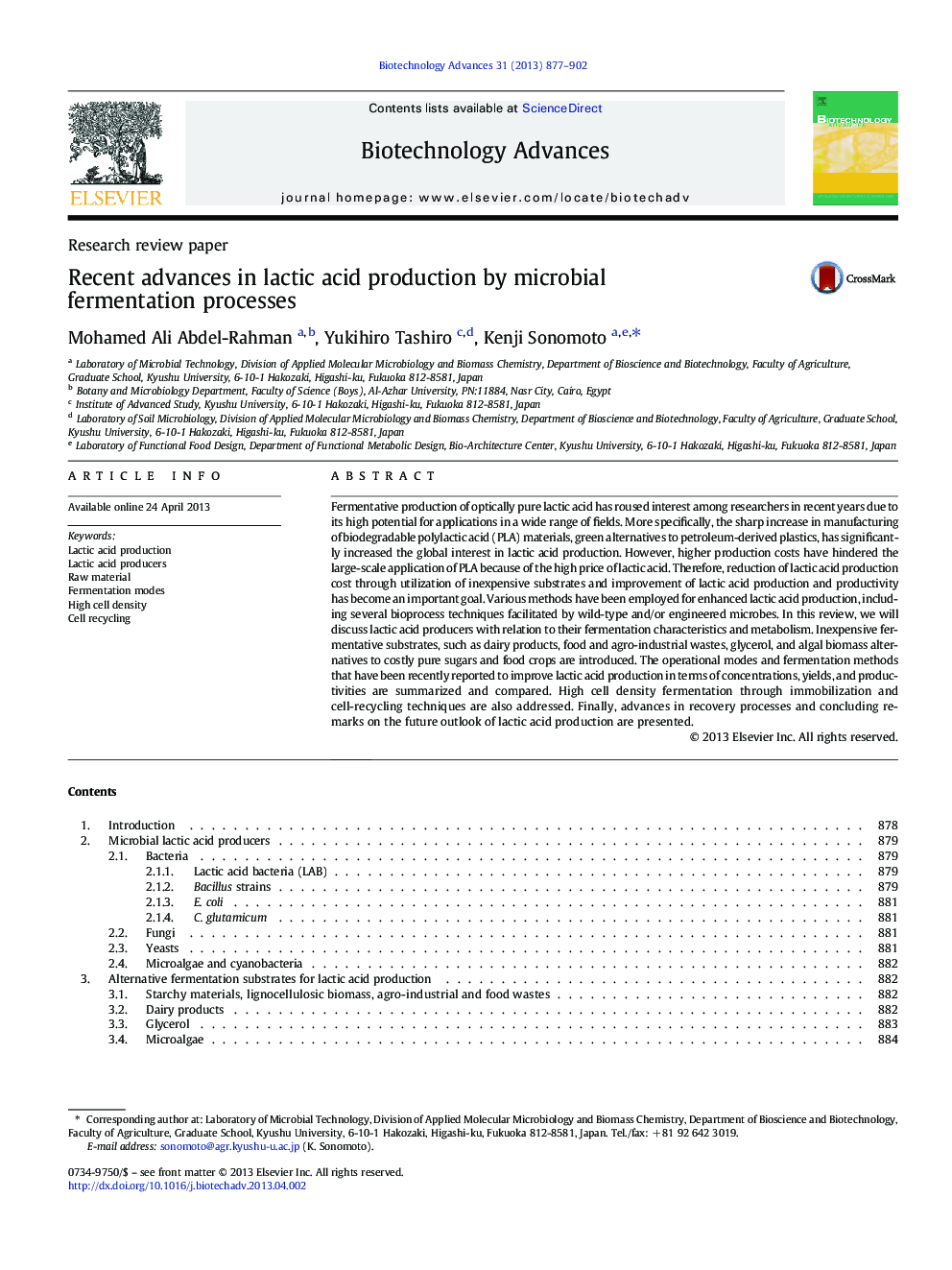| Article ID | Journal | Published Year | Pages | File Type |
|---|---|---|---|---|
| 14350 | Biotechnology Advances | 2013 | 26 Pages |
Fermentative production of optically pure lactic acid has roused interest among researchers in recent years due to its high potential for applications in a wide range of fields. More specifically, the sharp increase in manufacturing of biodegradable polylactic acid (PLA) materials, green alternatives to petroleum-derived plastics, has significantly increased the global interest in lactic acid production. However, higher production costs have hindered the large-scale application of PLA because of the high price of lactic acid. Therefore, reduction of lactic acid production cost through utilization of inexpensive substrates and improvement of lactic acid production and productivity has become an important goal. Various methods have been employed for enhanced lactic acid production, including several bioprocess techniques facilitated by wild-type and/or engineered microbes. In this review, we will discuss lactic acid producers with relation to their fermentation characteristics and metabolism. Inexpensive fermentative substrates, such as dairy products, food and agro-industrial wastes, glycerol, and algal biomass alternatives to costly pure sugars and food crops are introduced. The operational modes and fermentation methods that have been recently reported to improve lactic acid production in terms of concentrations, yields, and productivities are summarized and compared. High cell density fermentation through immobilization and cell-recycling techniques are also addressed. Finally, advances in recovery processes and concluding remarks on the future outlook of lactic acid production are presented.
